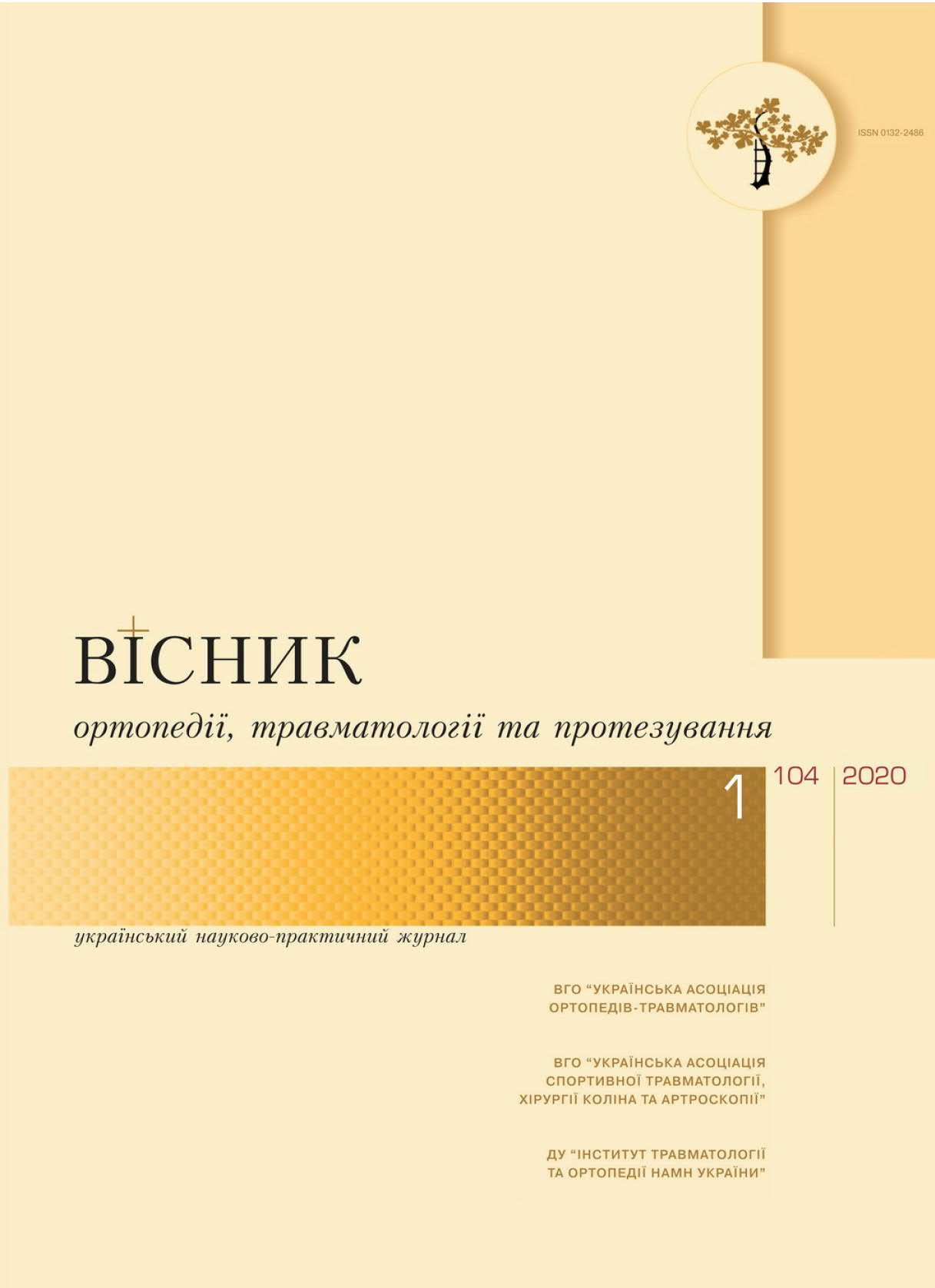Abstract
Summary. Objective: to determine the prognostic value of the factors influencing the outcome of treatment of plantar fasciitis, to develop a system for predicting the results of treatment of plantar fasciitis.
Materials and Methods. Analysis of long-term results of conservative treatment of 145 patients with plantar fasciitis. Clinical, instrumental and statistical (correlation-regression analysis) research methods were used. The factors that influenced the end result of treatment were identified.
Results. The statistically significant influence of age, gender, disease duration up to 6 months, BMI up to 25, the presence of “functional” equinus, pronated foot and history of treatment on the prevalence of positive treatment results were determined. The estimation of the informative nature of the presented factors for the probability of achieving positive results of treatment, the calculation of the prognostic coefficients and their sum were determined. A high prognostic evaluation of a successful treatment outcome should be expected with a total prognosis of +5 to +25; a total estimate of prognostic coefficients from -15 to +5 determines the average probability of positive treatment results; the sum of the prognostic coefficients from -34 to -15 determines the low probability of achieving positive treatment results.
Conclusions. The result of treatment of plantar fasciitis depends on age, sex, duration of the disease up to 6 months, BMI, "functional" equinus, pronated foot, and medical history. The system for predicting treatment outcomes involves the possibility of obtaining high, medium and low probability of a positive result when applying conservative treatment.
References
Hansen L, Krogh TP, Ellingsen T, et al. Long-Term Prognosis of Plantar Fasciitis: A 5- to 15-Year Follow-up Study of 174 Patients With Ultrasound Examination. Orthop J Sports Med. 2018;6(3) 2325967118757983. doi: 10.1177/2325967118757983.
Robroy LM, Todd ED, Stephen FR. et al. Heel Pain - Plantar Fasciitis: Revision 2014. J. Orthop. Sports Phys. Ther. 2014;44(11):A1-A23. doi:10.2519/jospt.2014.0303.
Monteagudo М, de Albornoz PM, Gutierrez В, et al. Plantar fasciopathy: a current concepts review. Foot & Ankle. 2018;3:485–493. DOI: 10.1302/2058-5241.3.170080.
Irving DB, Cook JL, Young MA, et al. Impact of chronic plantar heel pain on health-related quality of life. J Am Podiatr Med Assoc. 2008;98(4):283-289. PMID: 18685048.
Johal KS, Milner SA. Plantar Fasciitis and the calcaneal spur: fact or fiction? Foot and Ankle Surgery.2012;18(2):31-41. DOI: 10.1016/j.fas.2011.03.003.
Apostolakos J, Durant Т, Dwyer С, et al. The enthesis: a review of the tendon-to-bone insertion. Muscles Ligaments Tendons J. 2014; 4(3):333–342. PMID: 25489552.
Buono A. Del, Battery L, Denaro V, et al. Tendinopathy and inflammation: some truths. International Journal of Immunopathology and Pharmacology. 2011; 24(1)2:45–50. DOI: 10.1177/03946320110241S209.
Thomas JL, Christensen JC, Kravitz SR, et al. The diagnosis and treatment of heel pain: A clinical practice guideline – revision 2010. J. Foot Ankle Surg. 2010;49:S1–S19. DOI: 10.1053/j.jfas.2010.01.001.
Beeson P. Plantar fasciopathy: revisiting the risk factors. Foot Ankle Surg. 2014;20:160–165. DOI: 10.1016/j.fas.2014.03.003.
Digiovanni BF, Nawoczenski DA, Malay DP, et al. Plantar fasciaspecific stretching exercise improves outcomes in patients with chronic plantar fasciitis: a prospective clinical trial with two-year follow-up. J Bone Joint Surg Am. 2006;88(8):1775-1781.
Silfversköld N. Reduction of the uncrossed two-joints muscles of the leg to one-joint muscles in spastic conditions. Acta Chir Scand. 1924;56:315–30.
Elveru RA, Rotstein JM, Lamb RL, et al. Methods for taking subtalar joint measurements. Phys. Ther.1988;68(5):678 – 682. DOI: 10.1093/ptj/68.5.678.
Гублер Е.В. Вычислительные методы анализа и распознавания патологических процессов. «Медицина». 1978, 296 с.
Wolgin M, Cook C, Graham C, Mauldin D. Conservative treatment of plantar heel pain: long-term follow-up. Foot Ankle Int. 1994;15(3): 97-102.
Patel А, DiGiovanni BF. Association between plantar fasciitis and isolated contracture of the gastrocnemius. Foot Ankle Int. 2011; 32:5 – 8. doi: 10.3113/FAI.2011.0005.
Prichasuk S, Subhadrabandhu T. The relationship of pes planus and calcaneal spur to plantar heel pain. Clin Orthop. 1994;306:192-6. PMID: 8070194.
Wearing SC, Smeathers JE, Urry SR, et al. The Pathomechanics of Plantar Fasciitis. Sports Med 2006; 36(7)585-611. DOI: 10.2165/00007256-200636070-00004.

This work is licensed under a Creative Commons Attribution 4.0 International License.

